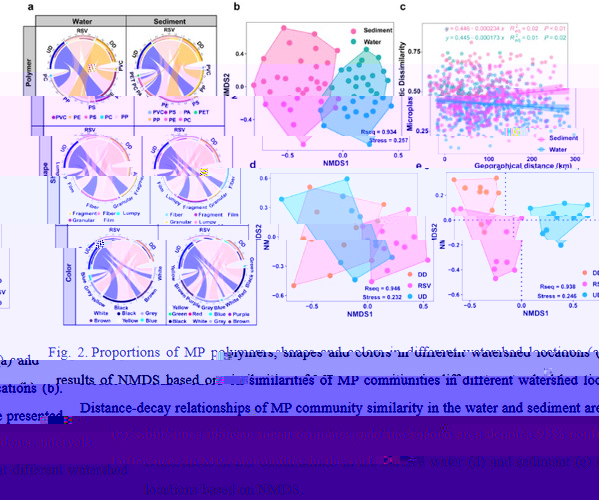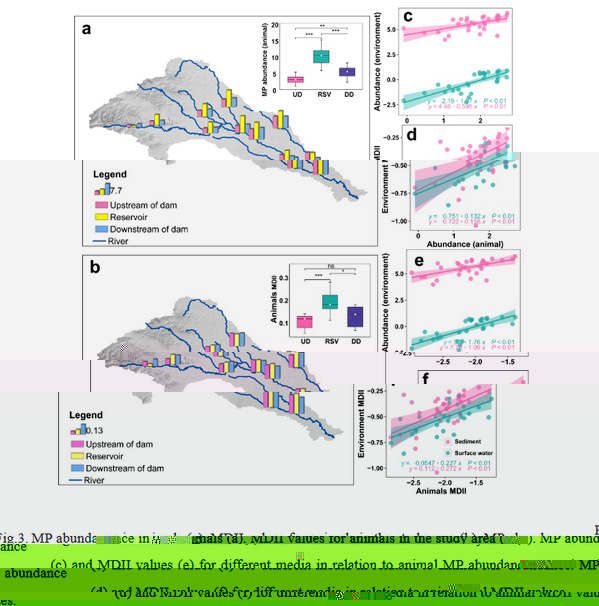Microplastics (MPs),due to their high abundance and small particle size, are easily ingested by a wide range of organisms in the aquatic environment and produce physical or chemical toxic effects, threatening the health of water ecosystems. Damming constrain river capacity to flow unimpeded, affecting many fundamental processes and functions characteristic of healthy rivers and leading to the rapid decline of biodiversity and essential ecosystem services, and further altering the transport of pollutants such as MPs in the river. The impact of damming on river ecosystems has received increasing attention, but a comprehensive understanding of the occurrence, drivers and exposure risks of MPs pollution in multigate dam-type rivers is lacking. And our research will provide an important theoretical basis for the water ecosystem health of dammed rivers.
Professor Shuqing An's team has long been involved in research on river. The team investigated the characteristics and abundance of MPs in water, sediment and biological tissues in the vicinity of ten dams in the Shaying River basin to explore the spatial distribution of MPs in the environment and animals under the influence of dams and to disclose the effects of changes in MPs in the environment and food web structure on the MPs' accumulation in animals, so as to suggest hotspots of MPs exposure, migration processes and potential transfer pathways in the food chain in this type of watershed.

Dam construction affects the transportation, suspension, and deposition of MPs at different dam locations (upstream, reservoir, and downstream) by altering hydrodynamihas changed the migration process of MPs. The dams intercepted a large amount of MPs from upstream sediments in the reservoir but had no significant capturing effect on MPs in water. Unlike conventional contaminants, MPs have multiple morphological and compositional features (occurring in various colors, shapes, particle sizes, and polymer components), which have different ecological effects. Dam construction resulted in significant differences in the composition of sediment MPs at different locations in the dam, and these differences were formed mainly by differential vertical migration of MPs of different densities, shapes and sizes following hydrodynamic alterations (Fig. 2).

To explore the spatial distribution of MPs in animals under the influence of dams and the factors affecting them, the team explored fish, aquatic arthropods and molluscs in the study area and constructed food webs. The structure of the food web was found to be simplified in the reservoir compared to upstream and downstream of the dam, and animals were found to be at highest risk of contamination by MPs (Fig. 3). The gastrointestinal tract of animals is the organ most rich in MPs accumulation. Molluscs are the most contaminated with MPs and these animals are an important link in the food chain for MPs to enter. The high abundance of MPs in environmental sediments and the simplification of the food web are important factors leading to increased accumulation of MPs in animals (Fig. 4).


The microplastic diversity integrated index (MDII) and community analyses on microplastic polymers were introduced and highlighted in this study, which will have important applications for future work on source resolution and pollution control of MPs. For river management, gate and dam type rivers are heavily influenced by hydrological regulation and attention should be paid to the hydrodynamic effects on the transport of MPs, especially sediment MPs. Our data suggest that the risk of MP pollution in reservoirs requires further attention and more efforts could be focused on monitoring MP pollution in reservoirs, potential ecological risk assessments and contamination source control.
The research was published online in the Journal of Hazardous Materials in October 2022 under the title 'Damming has changed the migration process of microplastics and increased the pollution risk in the reservoirs in the Shaying River Basin'. Shen Jiachen, a PhD student at the School of Life Sciences, Nanjing University, is the first author of the study, with Associate Professor Leng Xin at the School of Life Sciences, Nanjing University, and Dr. Li Ning at Nanjing Xiaozhuang College as corresponding authors. This work was financially supported by the Major Science and Technology Program for Water Pollution Control and Treatment ans the Fundamental Research Funds for the Central Universities.
Link to original article: https://doi.org/10.1016/j.jhazmat.2022.130067
